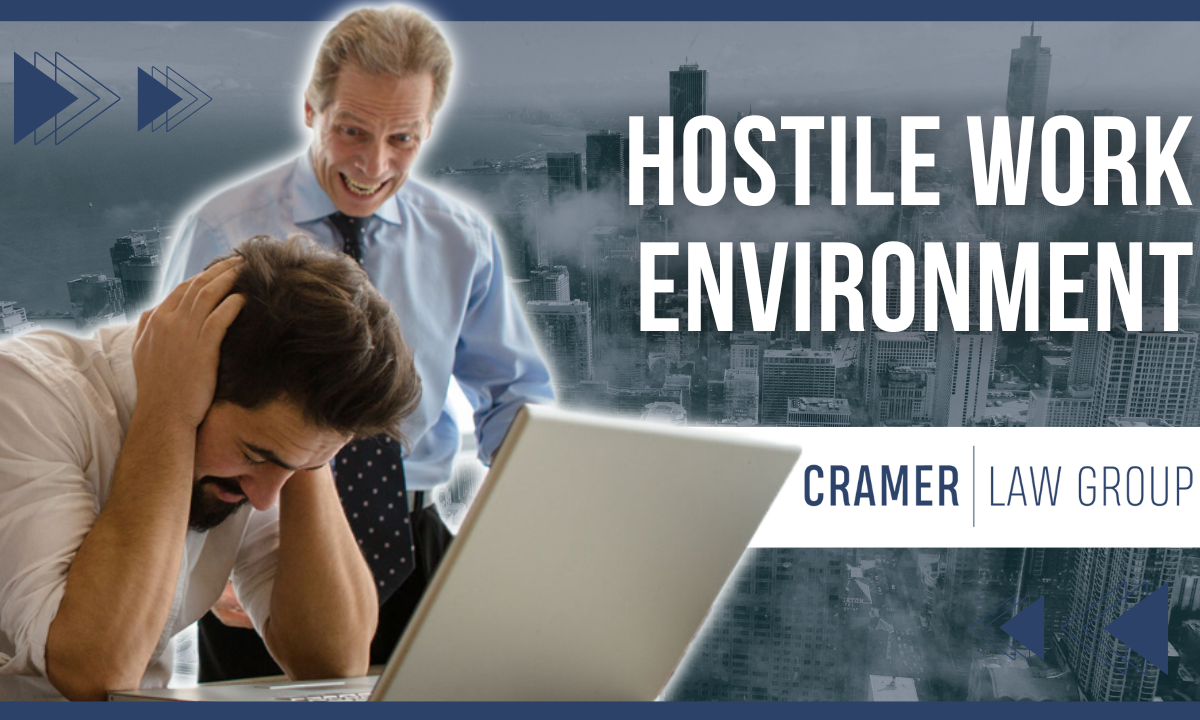
At Cramer Law, we often hear employees say, “I’m being harassed” or “This is a hostile work environment.” While these concerns are valid, it’s important to understand that the legal definition of a hostile work environment is not as broad as many believe. In this blog, we’ll break down what actually constitutes a hostile work environment, why workplace bullying isn’t necessarily illegal, and what steps you can take if you find yourself in a toxic work environment.
What Is a Hostile Work Environment?
In the legal world, the term “hostile work environment” doesn’t mean simply having a rude boss or dealing with an unpleasant colleague. It’s a very specific term that refers to situations where an employee is subjected to severe and pervasive treatment that creates an intimidating, offensive, or abusive work atmosphere—specifically due to factors like race, gender, disability, or other protected classes under federal or state law.
Unfortunately, many workers may feel they’re experiencing harassment, but under the law, it doesn’t always meet the criteria for a “hostile work environment.” For instance, workplace bullying—while distressing and pervasive—is not automatically considered harassment unless it is linked to a protected class.
A Legal Example: Courts Have Some Catching Up to Do
One case that illustrates the complexities of hostile work environment claims involves an employee who was on a business trip with her supervisor. The supervisor crawled into bed with her without her consent, and despite the clear violation of personal boundaries, the court ruled that this did not meet the legal definition of a hostile work environment. This case highlights the gap between what we may perceive as harassment and what the courts recognize as legally actionable.
The legal standard for hostile work environment claims is still evolving, and in many instances, courts have not fully caught up with the reality of workplace bullying and toxic workplace culture.
What Does “Severe and Pervasive” Actually Mean?
For a situation to qualify as a hostile work environment under the law, it must meet certain criteria. Specifically, the conduct must be severe and pervasive enough to affect the employee’s work performance or create an intimidating, hostile, or offensive environment. Importantly, this behavior must also be linked to a protected characteristic, such as:
- Race
- Gender
- Disability
- Age
- Religion
- Sexual orientation
Simply being bullied or having a bad boss isn’t enough to qualify for a hostile work environment claim. It’s crucial to understand that the behavior must be related to a protected class for the legal system to take action.
Bullying in the Workplace: An Unaddressed Issue
While bullying at work is pervasive and can take a toll on employees’ mental and emotional health, it does not always meet the legal threshold for harassment. Many people come to us seeking help after experiencing ongoing bullying, only to learn that, according to the law, it does not fall under the category of a hostile work environment.
This is where the legal system, unfortunately, still has a long way to go. Many believe that workplace bullying should be addressed more aggressively, both through company culture and legal means. However, unless the bullying is connected to a protected class, it may not be something the law can address directly.
How Cramer Law Can Help
If you are experiencing a hostile work environment, it’s essential to understand whether your situation meets the legal criteria for a claim. At Cramer Law, we can help you navigate these complex cases and determine whether your situation warrants legal action.
If you are dealing with workplace bullying, harassment, or discrimination based on a protected class, don’t hesitate to contact Cramer Law Group. Our experienced team is here to help you understand your rights and explore the best course of action for your case.
Get the Help You Need Today
If you are being treated unfairly at work, it’s important to have an experienced team by your side. Contact Cramer Law Group today for a consultation and let us help you take the next step in protecting your rights.



